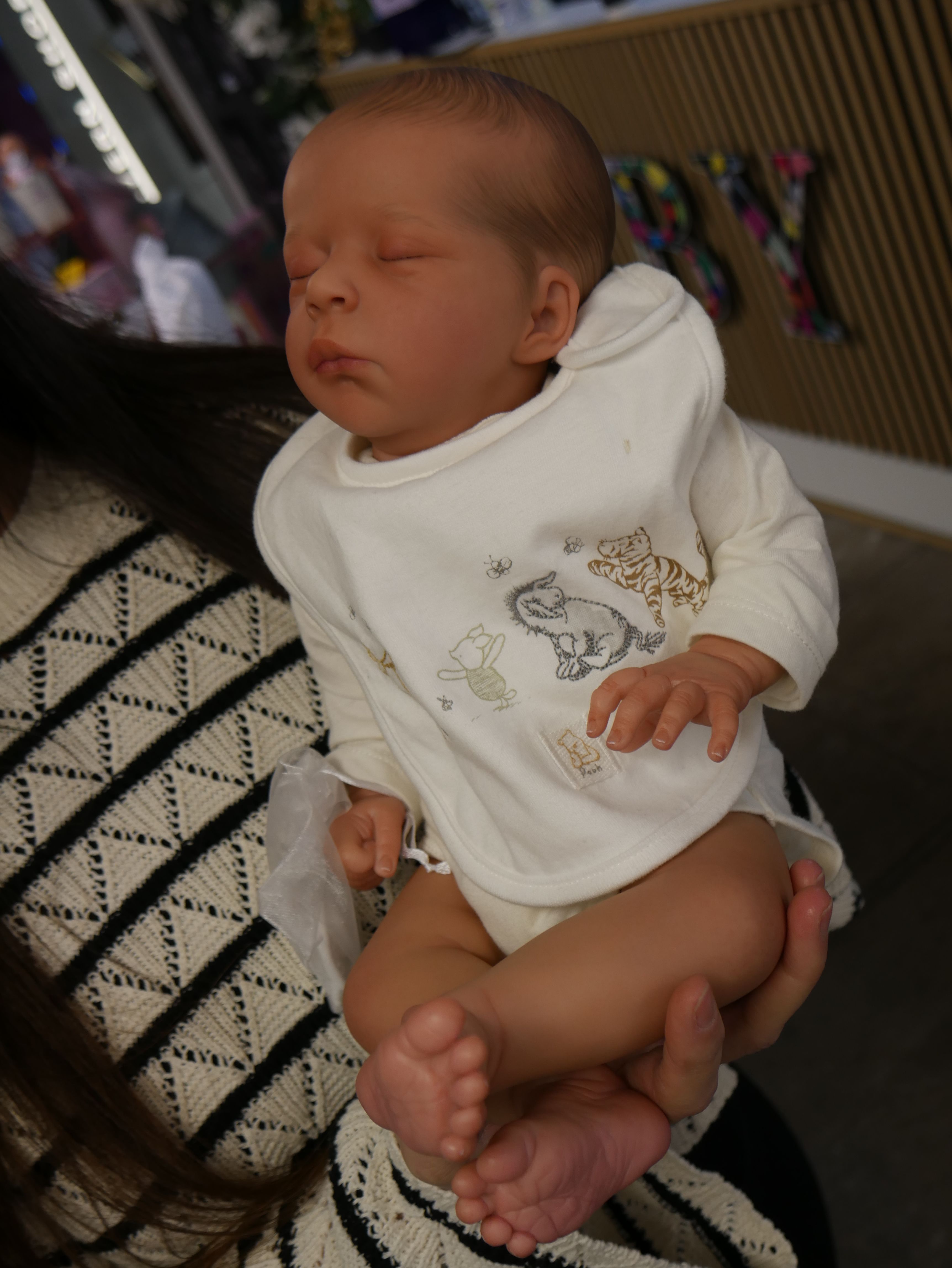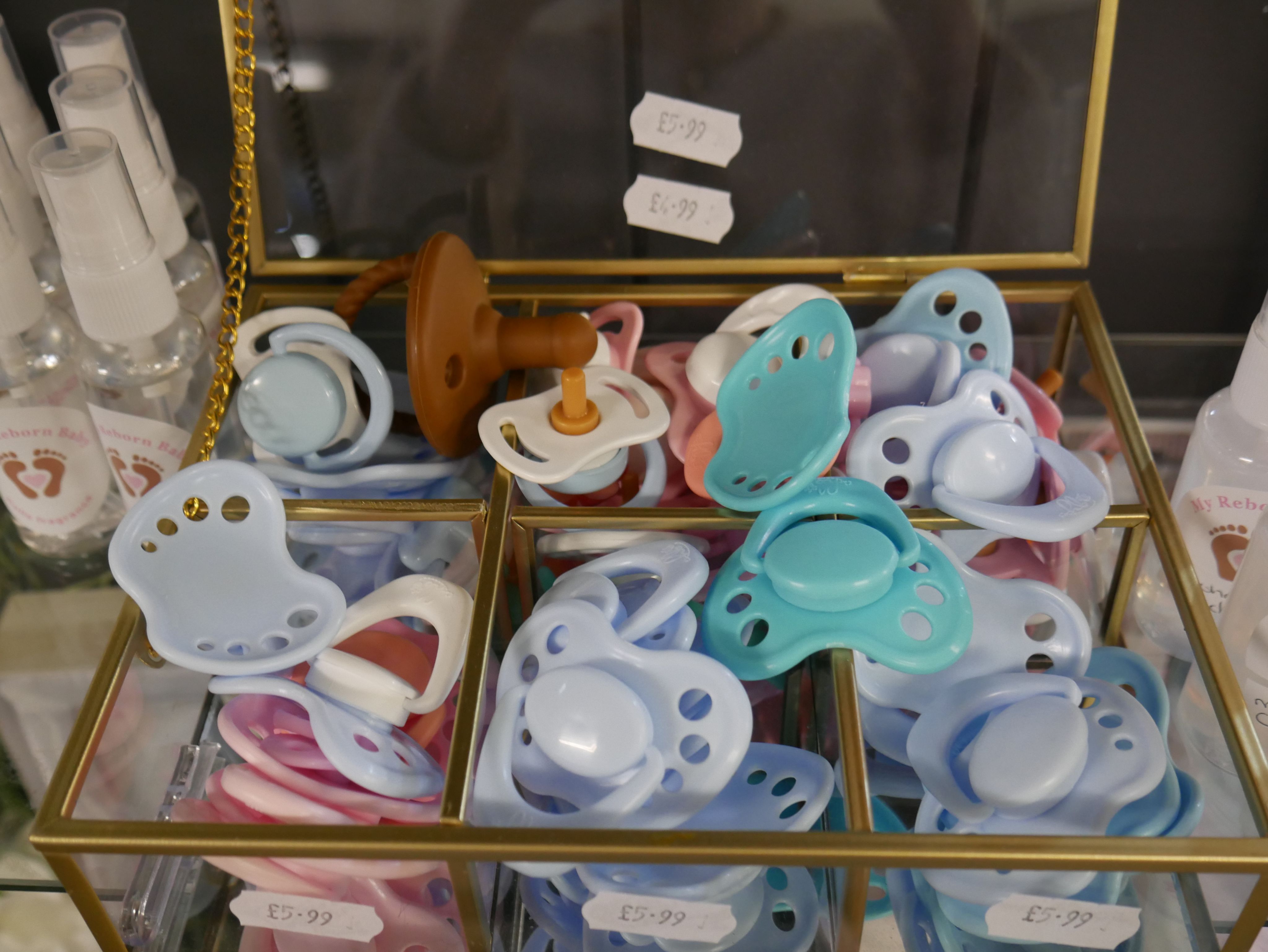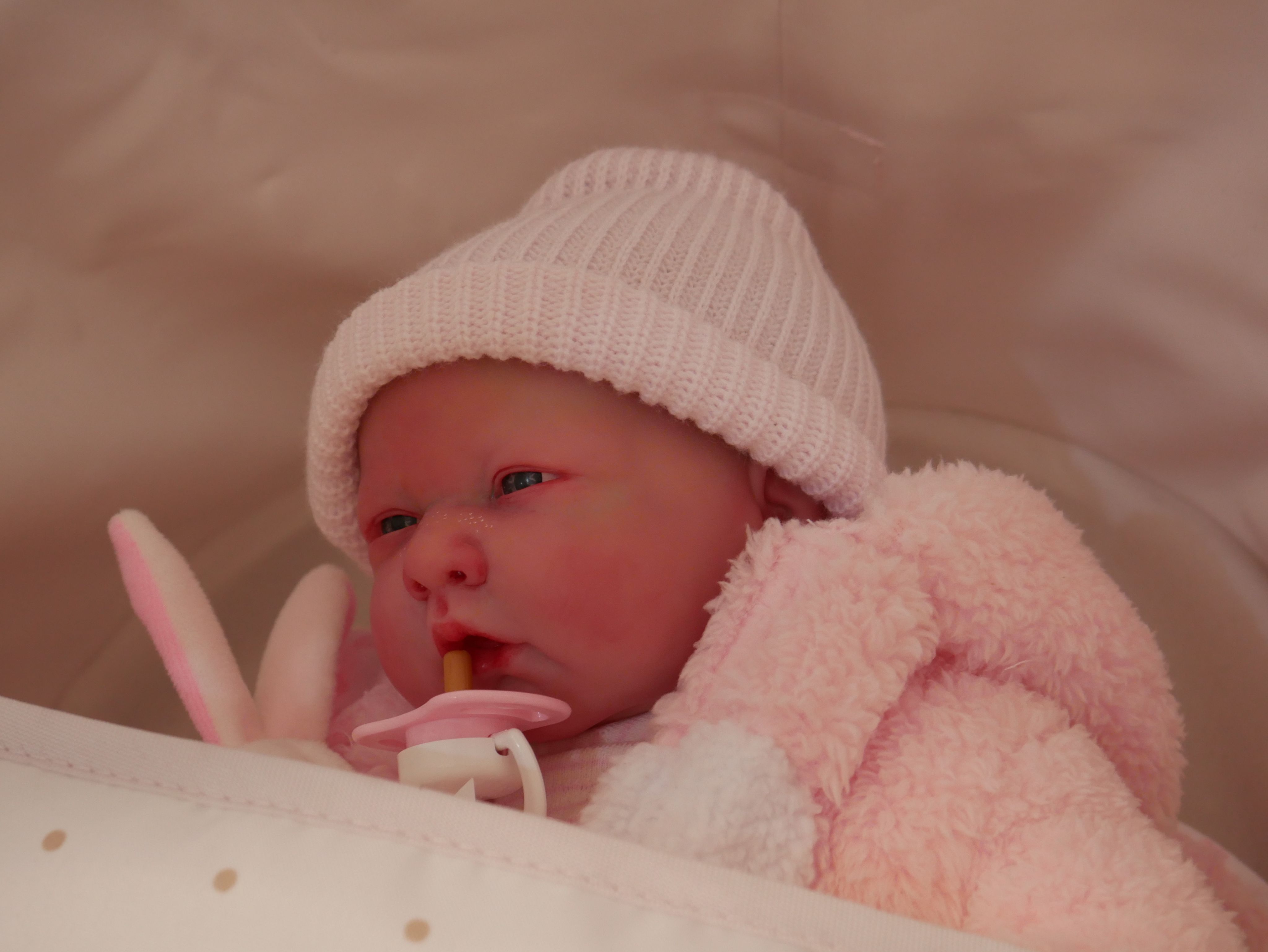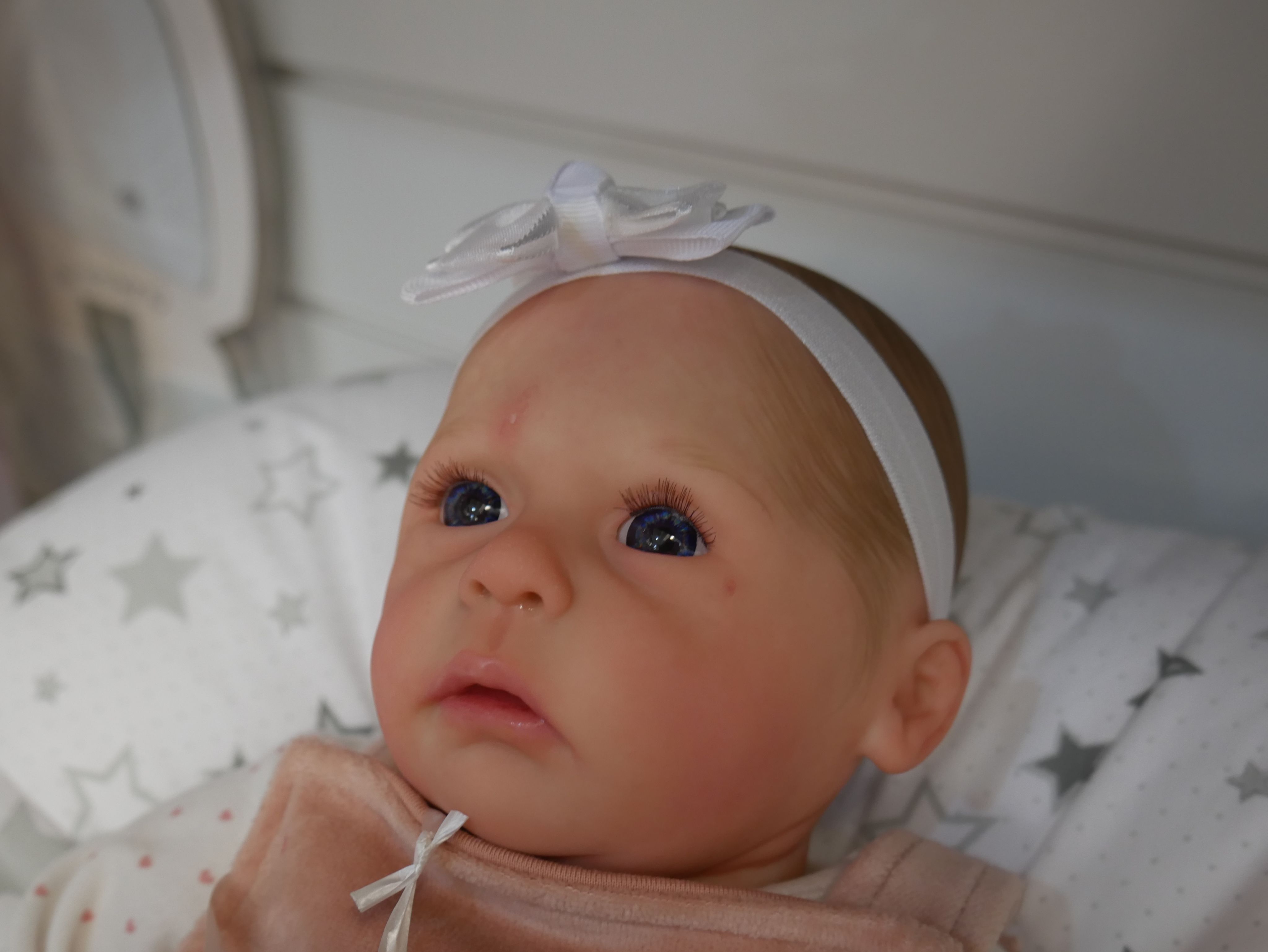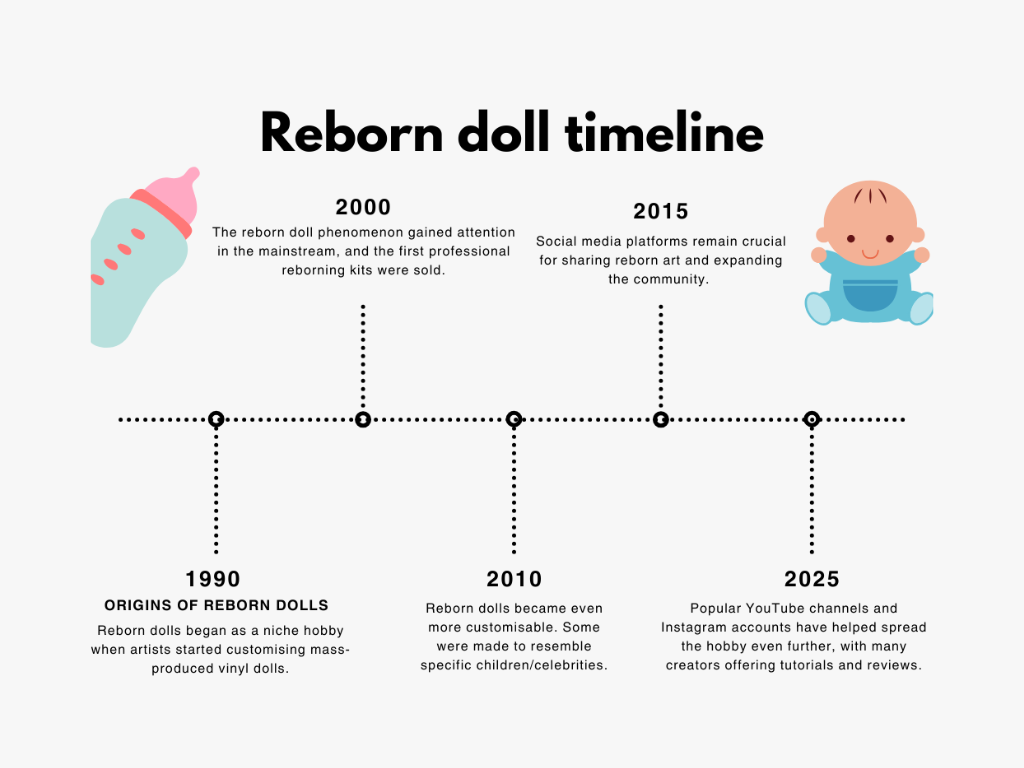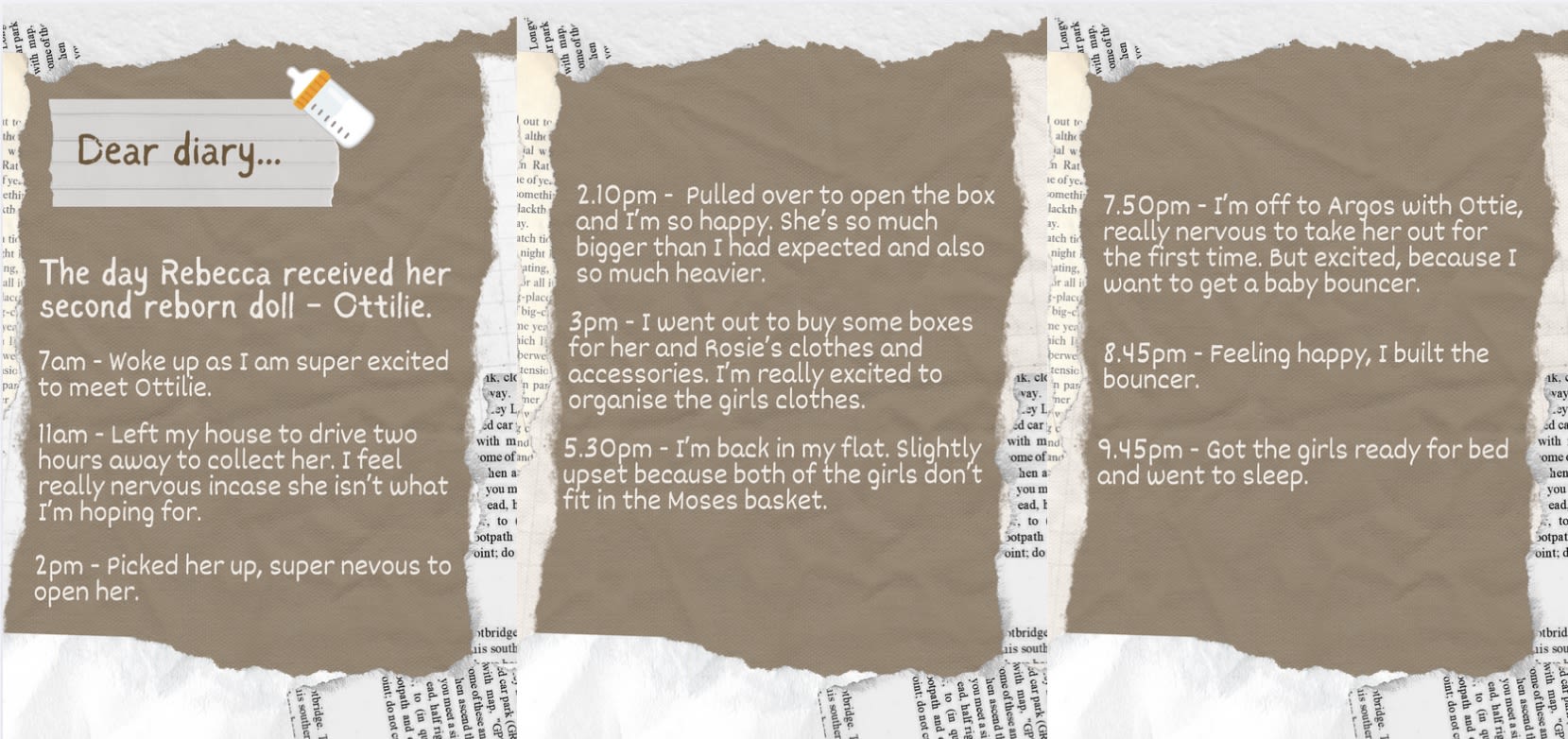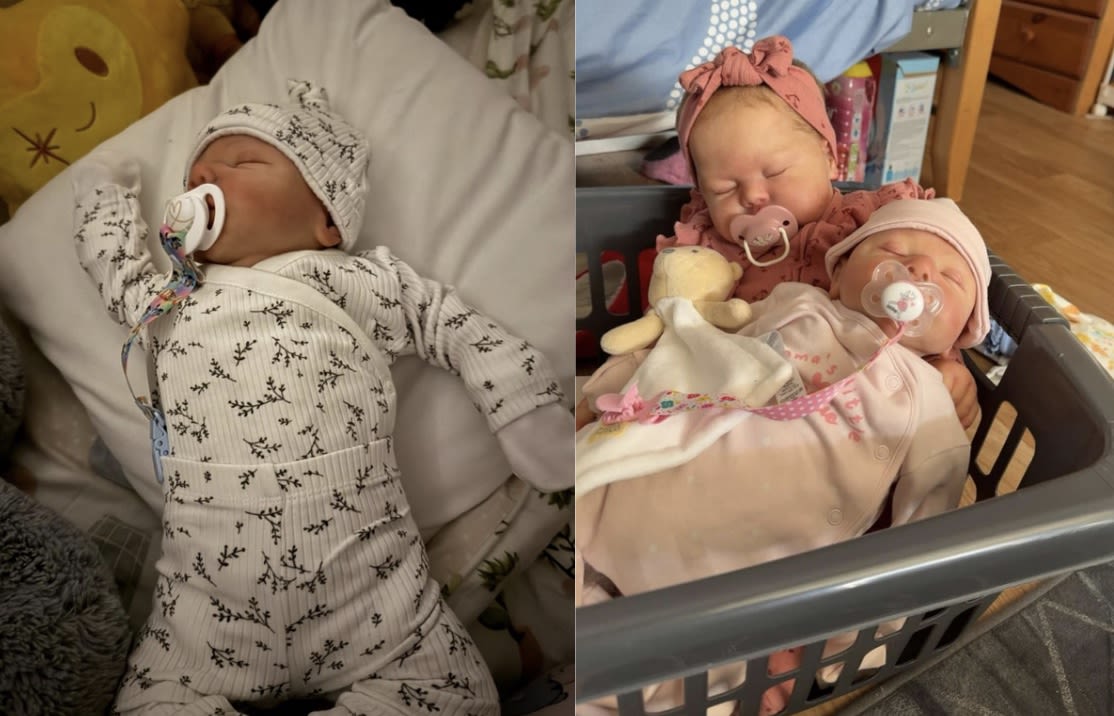Reborn dolls: meet the women finding comfort from lifelike 'babies'
By Mia Williams
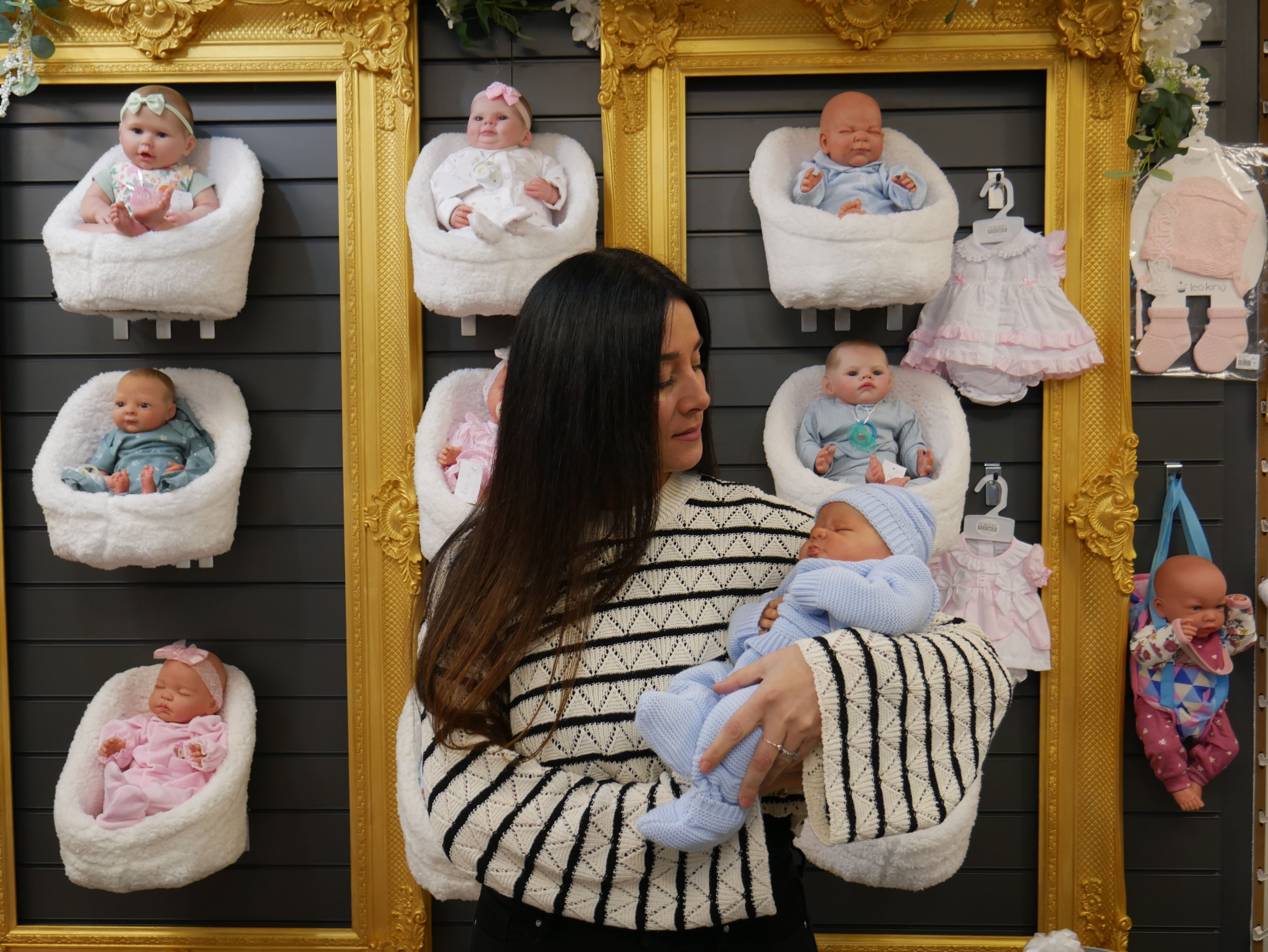
They may look, feel, and be cared for like real babies - but reborn dolls can be left alone, unfed, and sleeping for weeks, months, or years upon end. So what makes the bond between a reborn mum and their lookalike child so strong?
Rebecca Wiles, 21, walks over to the moses basket in her living room.
She picks up Rosie, her two-month-old baby, and sits down on the sofa for a cuddle.
But Rosie isn’t an ordinary baby.
In fact, she’s not real.
“She gives me comfort, and helps me feel less alone," says Rebecca.
And she isn’t alone.
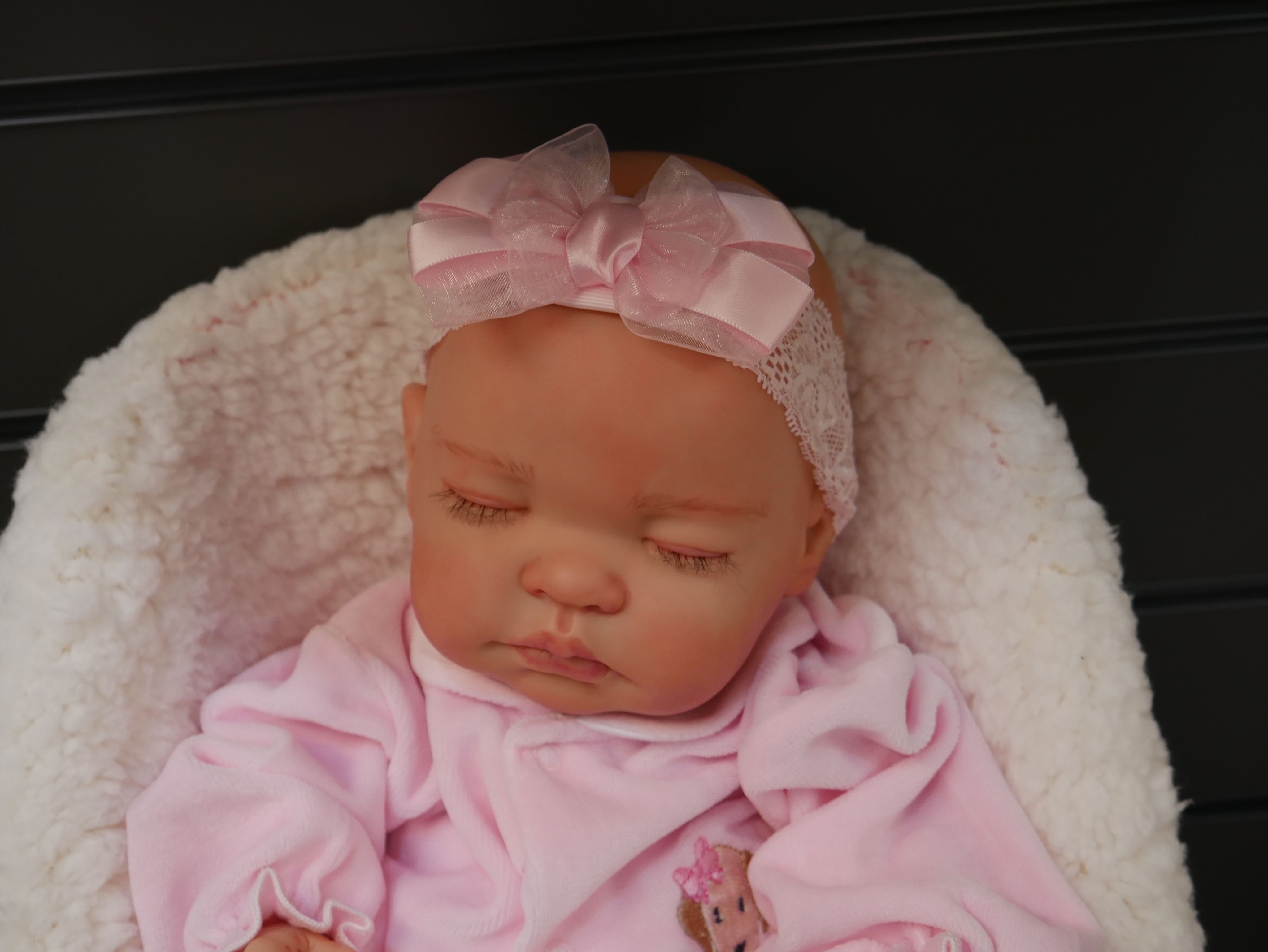
The community of reborn doll mums in the UK is growing into the thousands.
The hashtag ‘reborndoll’ on TikTok has been used over 180,000 times, and the platform is flooded with clips of mums documenting ‘a day in their life’ with their reborn.
Reborn dolls were first introduced in the early 1990s as a form of art, but fuelled by the world of social media, their popularity has soared in recent years.
Lisa Trapasso, a reborn doll shop owner from Liverpool, opened her store in 2014.
She has since witnessed a rise in the amount of people buying her hyperrealistic babies.
Lisa makes, collects, and sells dolls, and has built a community of reborn parents who she speaks with daily.
But what is the appeal?
Reborn mum Rebecca said: “She [Rosie] has supported me through so much, lots of grief. Including several miscarriages and my mum passing away.”
And she isn’t the only one using hyperrealistic dolls as a way to navigate baby loss and infertility.
According to the NHS, around one in seven couples may have difficulty conceiving.
And for some women, their reborn dolls fill a child-shaped hole in their heart.
Rebecca said: “I have a couple of mental health issues and if I’m ever having a bad day, I know she’s readily accessible for a cuddle and a distraction.
“She encourages me to get outside.
“I feel more comfortable going for walks with her, so I’m getting a lot more exercise now too.”
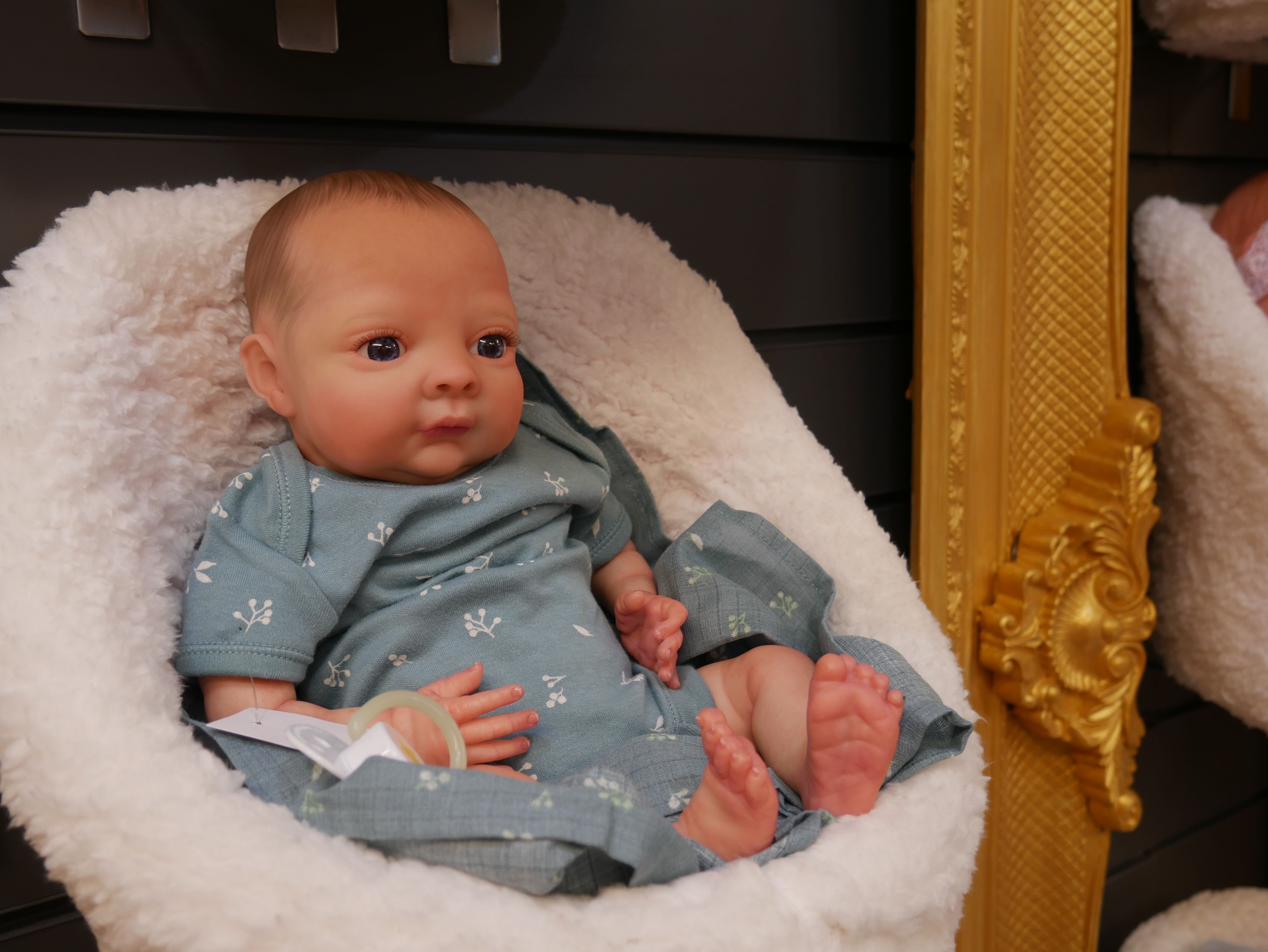
Rebecca's eldest reborn, Ottilie.
Rebecca's eldest reborn, Ottilie.
A routine with a reborn doll can look different everyday, because they don’t require the same level of responsibility that comes with caring for a real baby.
Rebecca added: “Most days Rosie will stay in my flat, but if I am going food shopping, general shopping or for a day out, she will come with me so I feel less alone.”
In the past two months, her reborn doll has accompanied Rebecca to an aquarium, the beach, a cinema, and she’s currently planning a trip for the three of them to the zoo.
Emilie St Hilaire, a humanities PhD student at Concordia University in Montreal, has spent just under a decade looking into the psychology behind collecting reborn dolls.
She found that some reborn mums get a kick from bringing their dolls out in public, and watching strangers mistake them for real babies.
“It’s like having a secret," she has said.
"There’s comfort in cuddling and physically holding something that feels like a baby, even though it’s not a baby.
"It can release some of the same endorphins.”
However, the 21-year-old reborn mum admitted that taking her doll out “can feel scary” as a result of outside stereotypes.
She urged people to “take time to learn and think before making any comment towards a reborn owner.”
But how exactly are they made?
The price of the dolls is a completely separate controversy.
Amid the cost of living crisis, some people simply cannot afford to take care of a child, and a reborn doll can be a much cheaper alternative.
But it doesn’t mean that buying and looking after the dolls can’t be expensive.
“They’re handmade pieces of art,” said Lisa.
“Mine range from £220 and they can go up to £600-£700 depending on the doll.”
University students aren’t famously known for having enormous amounts of spare cash to do with what they please, but Rebecca sets aside a reborn budget every month.
She said: “They are expensive, so I usually save a certain amount a month for either clothing, prams or save over four to six months for a new reborn.”
She noted that there is however money to be saved, by keeping your babies the same gender.
Much like parents pass hand-me-downs to their second child, reborn mums share clothes between their dolls.
Rebecca recently purchased her new doll Ottilie for £500, who is slightly older (three-six months) than her first reborn, which she paid £250 for.
Below is a diary entry from Rebecca on the day she received her second reborn...
What’s clear is that while collecting reborn dolls may sound like a pretty niche hobby, the reality is very different.
And while many people still struggle to understand the ‘why’ behind collecting reborn dolls, perhaps there is an air of privilege to not understanding.
"It can give people a purpose and a reason to keep going," Rebecca said.
And for reborn mums like her, battling infertility and loss, their hope is that others never have to understand.
